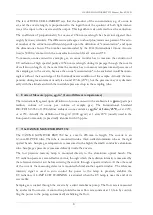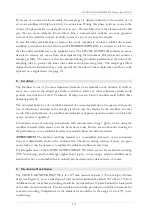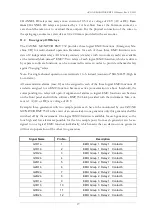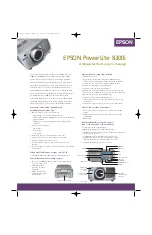
OZONE MONITOR BMT 932 Manual, Rev. 02/2021
7
Les rayons ultra-violets peuvent endommger la vue. ne jamais regarder la lampe sans protection adéquate.
Attention
: Ce produit se sert de l’équipement de protection de votre installation électrique concernant les sur-
charges et les courts-circuits. Vous devez vous assurer que l'intensité de la fusible ou du disjoncteur protégeant le
conducteur de phase ne dépasse pas 15 A à 120 VAC (10 A à 240 VAC).
Att.:
Si le câble d'alimentation est remplacé, le nouveau câble doit avoir un courant nominal de 10A ou plus.
5
Ozone Photometry
UV radiation with wavelengths below 300 nm is dramatically decreased by the passage through
ozone gas. This is one reason for the existence of life on earth. UV radiation coming from the
sun converts oxygen into ozone in the higher regions of our atmosphere, and hence provides
protection of our planet from exactly this UV radiation.
Between 200 and 300 nm wavelength (Hartley band) ozone has one of its strongest absorption
bands. The maximum absorption in this band occurs at about 254 nm. It happens that the
strongest mercury line (the wavelength of the highest radiation intensity produced by mercury
plasma) is at 253.7 nm. This is the reason why the radiation of a mercury lamp is exceptionally
well suited for photometric detection of ozone.
In the year 1729 Pierre BOUGUER, a professor of hydrography, published his "Essai d'Optique,
sur la Gradation de la Lumière". He already knew that light passing through a medium is de-
creased logarithmically. In the year 1760 Johann Heinrich LAMBERT published his "Photome-
tria sive de mensura et gradibus luminis, colorum et umbrae". Based on Bouguer's findings, he
described the passage of light through a medium more mathematically. BEER alleged in 1852
that, when the product of concentration and pass length is constant, extinction is also constant.
This is an important statement for general photometry, but is less important for ozone measure-
ment with UV radiation.
Figure 1








































